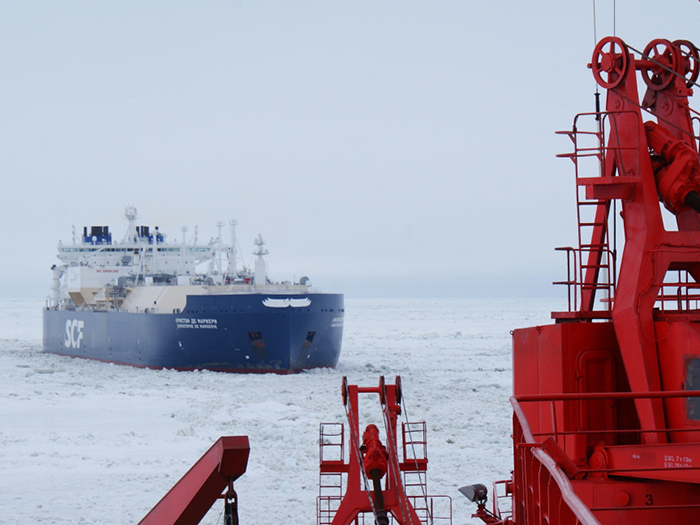
Sovcomflot completes first-ever May Northern Sea Route transit
Written by Nick Blenkey
While on the NSR, Christophe de Margerie was escorted by Atomflot's nuclear-powered icebreaker Yamal. [Image: Sovcomflot]
Russia’s SCF Group reports that yesterday, at 06:00 Moscow time, its icebreaking LNG carrier Christophe de Margerie successfully completed its passage across the Northern Sea Route (NSR), bound for China with a cargo of LNG from the Yamal LNG project.
This is the first time a large-capacity vessel of this type has crossed the NSR eastbound in May, when ice conditions in the eastern sector of the NSR remain challenging. Traditionally, navigation in this sector commences only in July.
The passage from the Port of Sabetta to Cape Dezhnev took the vessel 12 days to complete, during which the LNGC covered 2,563 nautical miles at a speed deemed safe given the navigational conditions.
While on the NSR, Christophe de Margerie was escorted by Atomflot’s nuclear-powered icebreaker Yamal. The LNGC has transited the most challenging parts of the route with Yamal’s support, including fast-ice fields in the Vilkitsky Strait, as well as hummocky ice floes in the East Siberian and the Chukchi seas.
Sergey Gen, Master of Christophe de Margerie, commented:
“The ice conditions encountered during the voyage matched our forecast: on some segments, the movement was heavily obstructed, but the crew was well prepared to handle it. The voyage has proven Christophe de Margerie’s excellent icebreaking, maneuvering, and structural capabilities, both when following an icebreaker or sailing independently in various modes. I also want to give credit to the crews of both Christophe de Margerie and Yamal for the high level of coordination between the two vessels during the NSR passage.”
Sovcomflot says the voyage has provided extensive information about the ice conditions along the eastern part of the NSR, whilst allowing the coordination between the LNG carrier and escorting icebreaker to be honed under extreme conditions. This will prove valuable for planning transportation solutions for future industrial projects in the Arctic, and could help expedite the future growth of NSR cargo traffic. This information will also be reflected in the design of future generations of Arctic vessels.




